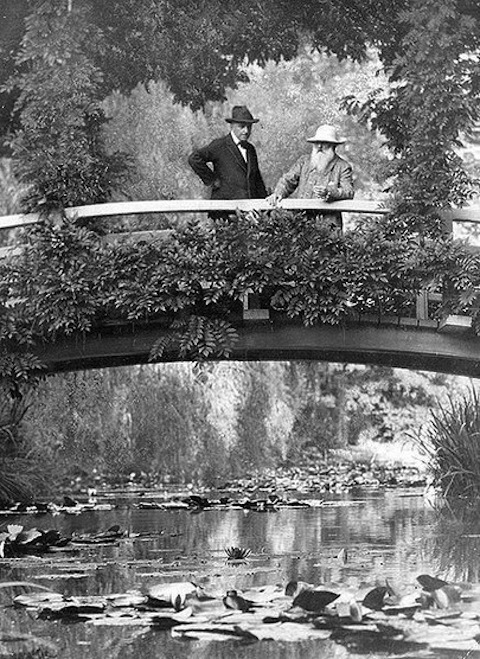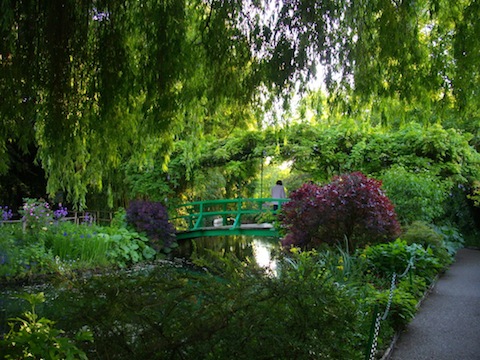
The late-1800’s European fascination with things Japanese sometimes bordered on the collection of Orientalist kitsch. At the height of French impressionism, so called Japonisme was everywhere, but rarely were Far East designs integrated into Western landscapes with such skill and sensitivity as in the work of Claude Monet. Next to his water lilies and haystacks, one of the most recognizable features in the painter’s work is a Japanese-style footbridge, which, like the lilies, was part of his garden at Giverny (see the aged Monet on the bridge in the 1922 New York Times photo above).

We’re familiar with the bridge as it appears in an 1899 painting Waterlily pond, green harmony, a symmetrical gray structure hovering in a lush, reflective sea of greens, lavenders, and pinks. As Monet’s eyesight further failed him, his paintings became harder to parse, turning to deep, Van Gogh-like swirls of color that are beautiful but sometimes completely abstract. Try and make out the bridge, for instance, in The Japanese Footbridge (above), painted between 1920 and 1922. Monet’s fascination with the bridge is particularly poignant when we consider that, as Australia’s National Gallery of Art says of Waterlily Pond, “not only did Monet create this painting, he made everything depicted in it,” meaning that Monet curated the landscape and supervised the footbridge’s construction.

Monet had it built in 1893, deliberately choosing a Japanese style, but employing local craftsman in the construction. And while the bridge had to be rebuilt in 1970, as you can see from French Impressionist travel guide Thomas Dowson’s 2011 photo of Monet’s real Normandy landscape (above), the painter’s gardens seem little changed from their nineteenth century character as a carefully balanced synthesis of East and West aesthetics.
A special thanks goes to @stevesilberman for sharing this with us.
Related Content:
Rare Film: Claude Monet at Work in His Famous Garden at Giverny, 1915
Impressionist Painter Edgar Degas Takes a Stroll in Paris, 1915
Josh Jones is a writer and musician based in Washington, DC. Follow him at @jdmagness


Leave a Reply